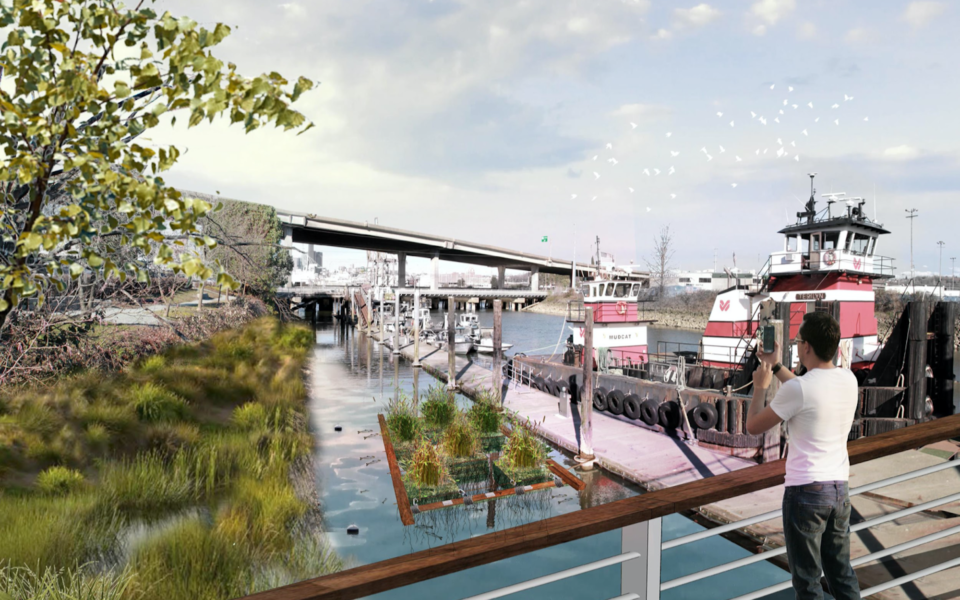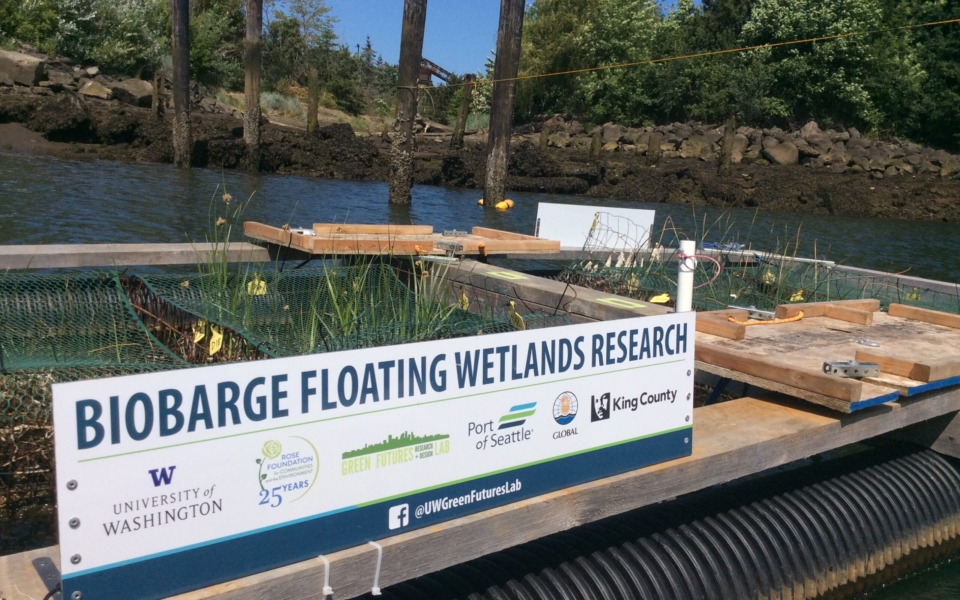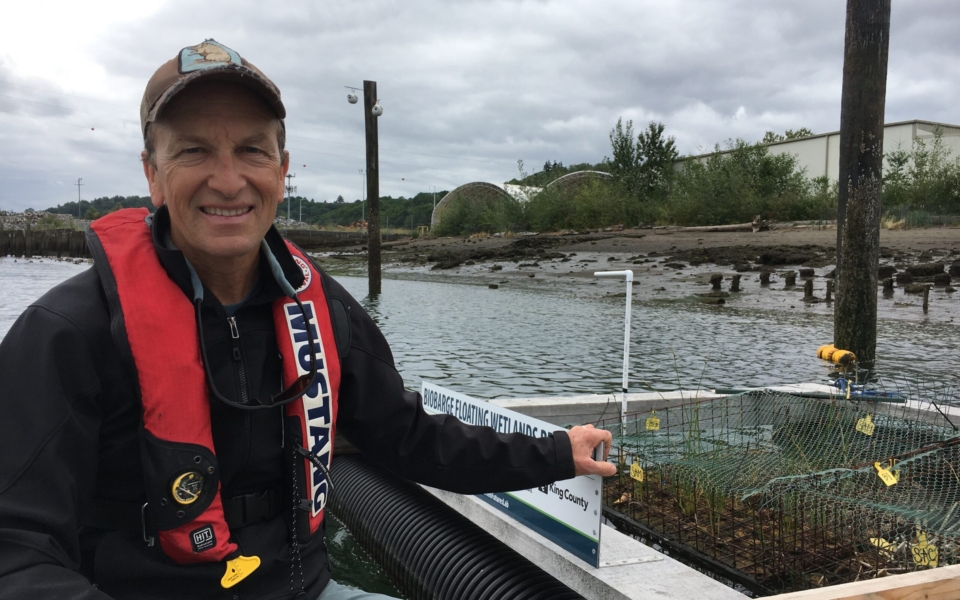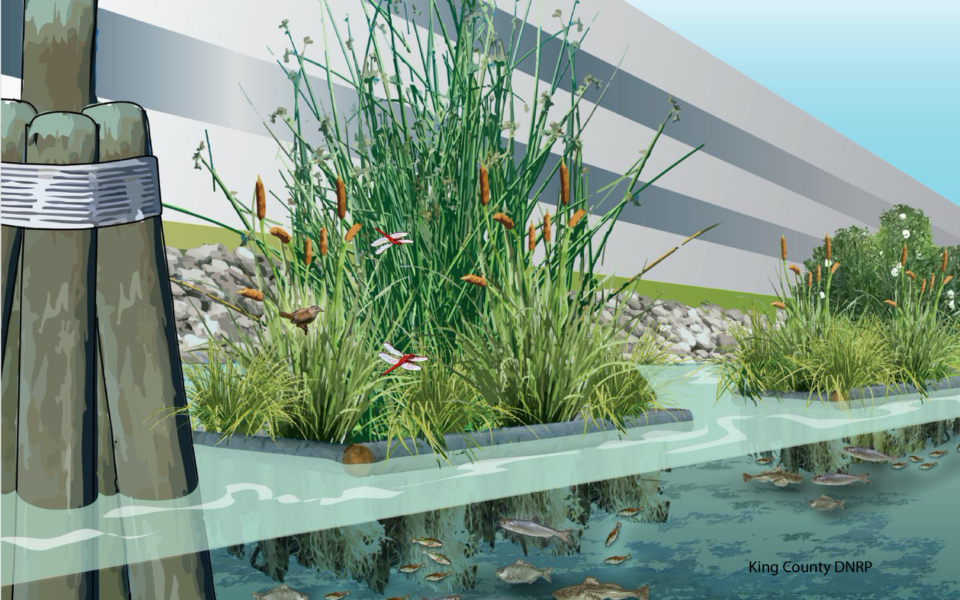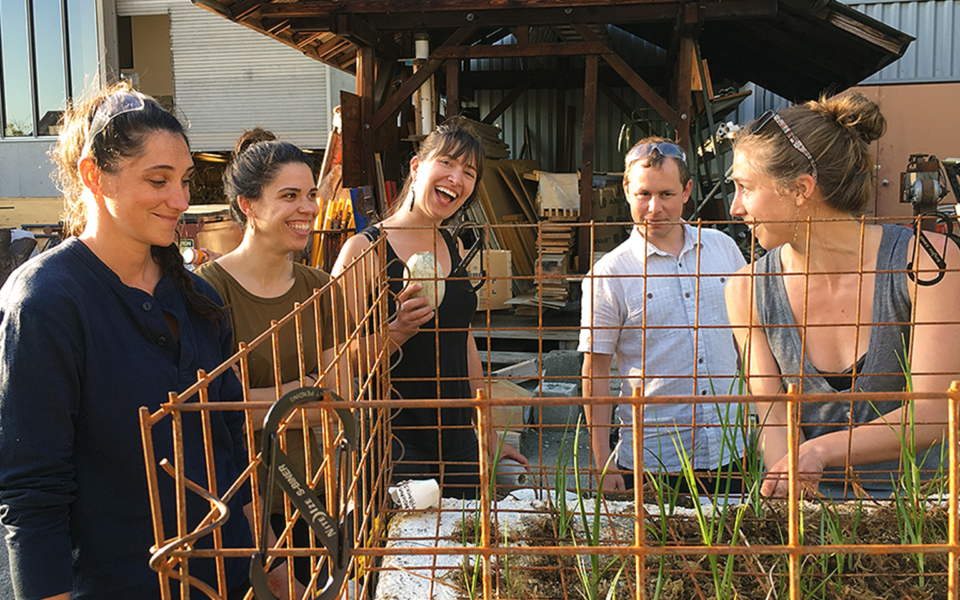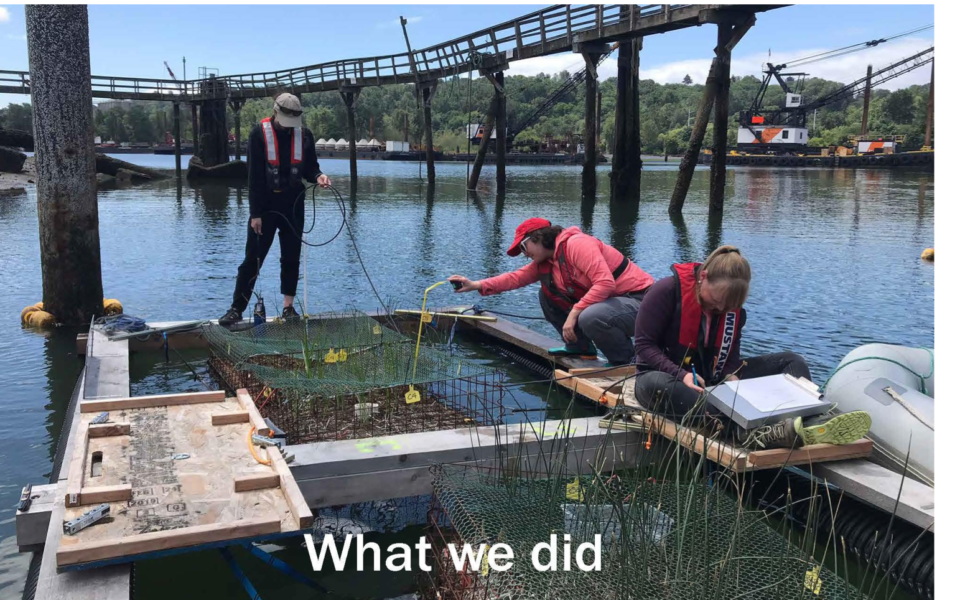Background
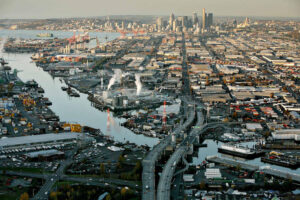
An aerial view of part of the Lower Duwamish River Superfund site. ( photo credit: Paul Joseph Brown at Ecosystemphoto.com)
Rapid development and land use alterations have caused significant loss and degradation to wetland ecosystems in Seattle. Dredging and channelization of the Duwamish River have resulted in a 97% loss of historic intertidal wetlands, replaced by 5,000 acres of urbanized shoreline. Ongoing efforts to create and restore intertidal wetland habitats in the Duwamish River are vital, but may not keep pace with the rate of salmon and orca decline and sea level rise. According to the 2014 Duwamish Blueprint, creating transition zone habitat is one of the most important conditions for the recovery of Chinook salmon populations in the Duwamish River.
Project Goals:
The Duwamish Floating Wetlands project is researching four primary questions:
-
-
- Can floating wetlands be successfully established on the Duwamish River?
- Can floating wetlands provide needed refuge and food for out-migrating juvenile salmon, and inhibit predation?
- Can floating wetlands improve water quality measures related to salmon requirements?
- Might community science involvement in the project help revive connections to the Duwamish?
-
In 2018 – 2019, a team of UW students and professionals from the Green Futures Lab and Port of Seattle constructed four floating wetland “Biobarges” which were then deployed in April 2019 and evaluated in two different sites in the Duwamish River. A team of students supported by a Technical Advisory Committee developed and tested methods for measuring fish use, water quality, plant growth and invertebrate production on the Biobarges in a “proof of concept” year, monitoring spring quarter until July 2019.
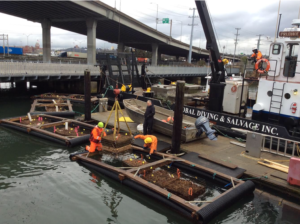
Workers help install floating wetlands within Biobarges for later deployment along the Duwamish (credit: University of Washington Green Futures Lab)
With support from the Port of Seattle, King County Waterworks, and the Rose Foundation, the UW Green Futures Lab is conducting a second year of performance monitoring of the floating wetlands. For our 2020 research, with the support of King County Council member Jeanne Kohl-Welles Water Quality funds, the Biobarges have been renovated with additional “biofilter” prototypes to vegetate and soften the outside edges. UW students in a Floating Wetlands Workshop have assisted with this construction, gaining hands-on learning about floating wetland systems. We are again monitoring for: juvenile salmon and other fish use; improvements to water quality measures related to salmon needs; and durability, functionality and growth of the floating wetland “biofilters.” UW students are working together with staff and community scientists to regularly collect data, which will be analyzed, interpreted and presented in a final report.
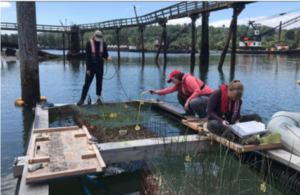
Community scientists work alongside the Green Futures Lab staff to note results of floating wetland installations (credit: University of Washington Green Futures Lab)
As a core element of the monitoring project, in 2019 the project mounted a community science program that involved over 13 individuals in weekly field monitoring, engaged 50+ more participants through several outreach and education events in the community, and fostered independent projects for early career researchers. Rose Foundation and Port of Seattle Funds are supporting a second year of community scientists, who are integral to the project’s success.
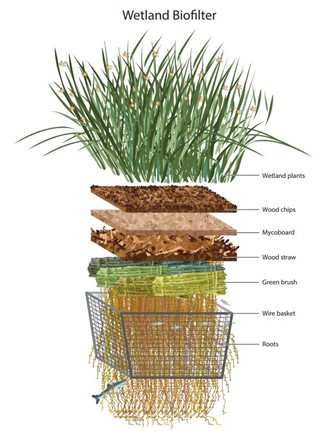
The general design of the floating wetlands that are being tested along the Duwamish (credit: University of Washington Green Futures Lab)
What is a floating wetland?
Floating wetlands have demonstrated potential as a practical multi-functional solution for reestablishing wetland habitats in degraded urban landscapes. Floating wetlands consist of a floating substrate which supports the hydroponic growth of native wetland vegetation, mimicking natural wetlands by improving water quality and providing aquatic habitat. Benefits include carbon sequestration; reduction of aquatic pollutants and water temperature; increased oxygen and food chain reconnections; habitat improvement; and shoreline beautification and protection. While steadily being incorporated into the improvement of urban water quality in cities such as Baltimore and Chicago, little is known about how salmon respond to floating wetlands here in the Puget Sound. In addition, decision makers are hesitant to issue permits to floating systems that may create “overwater coverage” without documented proof that they do not provide nuisance predator habitat. The Duwamish Floating Wetlands Project is designed to study whether floating wetlands can provide feeding and refuge habitat for salmon smolts in the transition zone of the Duwamish River without creating predator habitat, to increase the chances of short and long-term survival of these most valued species. and to inform permitting and policy barriers to creative restoration strategies for our region.
